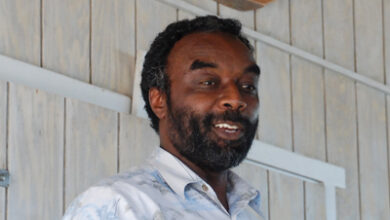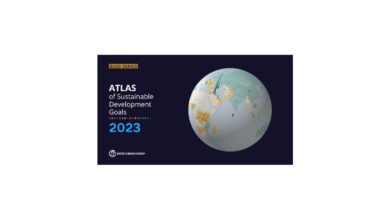If done correctly, aquaculture increases food production, boosts economic growth in coastal and rural areas, and can help keep waterways clean.

The United Nations maintains 17 Sustainable Development Goals that serve as a framework for international cooperation to help people and the planet thrive.
A recent study from the UN shows that aquaculture can improve food security and nutrition by increasing the amount of seafood available for people to eat. If done correctly, aquaculture increases food production, boosts economic growth in coastal and rural areas, and can help keep waterways clean.
Explore how aquaculture fits into the UN’s sustainability goals:
1. Shellfish Beds Help Restore Our Waterways
Shellfish such as oysters, clams, and mussels are not just a beach barbecue staple; they serve an important role in waterways. However, in some areas these shellfish have been largely lost from coastal ecosystems. Restoring and farming shellfish beds allows these bivalves to clean the water as they filter feed, serve as habitats for smaller organisms, and can even help prevent shoreline erosion. Preserving ecosystems, safeguarding biodiversity, and reversing land degradation are significant components of sustainable aquaculture.
2. Producing More Seafood Can Alleviate Food Insecurity
Although oceans cover 70 percent of the Earth, they account for less than 2 percent of human food production. Luckily, the number of sustainable aquaculture farms continues to increase to meet the demands of our growing population. Aquaculture, if done responsibly—as it is in the United States—is increasingly recognized as one of the most environmentally sustainable ways to produce food and protein. Leading health experts promote the value of adding seafood to one’s diet, especially for people who are pregnant or nursing and children. Farmed seafood can lead to improved nutrition and food security for many communities.
3. Aquaculture Creates Economic Opportunities
Aquaculture creates year-round jobs, supports resilient working waterfronts and coastal communities, and can provide sustainable economic growth. Across the United States, aquaculture production is valued at $1.5 billion. Aquaculture also drives employment in other areas of industry, such as seafood processing and feed and equipment manufacturing.
4. Sustainable Aquaculture Advances Technology
Sustainable aquaculture farming techniques focus on food production and environmental stewardship. Advanced technology, such as the free OceanReports mapping and planning tool, which analyzes “ocean neighborhoods.” It provides critical insights to make informed decisions that expand sustainable aquaculture opportunities while also minimizing potential environmental impacts. It also provides detailed information about habitats and species, current industries in the area, and potential hazards to aquaculture (such as undersea cables or shipwrecks).
5. Wild and Farmed Seafood is Good for Your Health
Aside from being just plain delicious, seafood is also great for your health. It contains nutrients that are linked to a multitude of benefits, including a reduced risk of coronary heart disease. Shellfish and fish (particularly salmon, tuna, and trout) are also a source of omega-3 fatty acids, which promote heart and brain health. Reliable sources of omega-3s are important, because our bodies are unable to produce them and they must be obtained through food. As aquaculture continues to expand seafood production, more people can include seafood in their diets, improving nutrition and well-being.
6. Aquaculture Can Preserve Cultural Heritage
In practice for nearly 1,000 years, traditional Hawaiian fishponds (loko i’a) are a valued cultural and environmental tradition of the Pacific Islands. Used by native Hawaiians to raise and fatten fish until ready to harvest, many of these fishponds have unfortunately fallen into disrepair. However, an increasing number of fishpond managers are working to rehabilitate these ponds; the restored sites are playing an important role in local communities. As more fishponds are revitalized, the supply of local seafood, jobs, and other revenue streams can also grow. The fishponds promote economic growth, productive employment, and sustainable resource management.
7. Sustainability Fosters International Collaboration
Marine aquaculture partnerships benefit from the sharing of costs, products, equipment, data, and technologies. International aquaculture collaboration creates a broad scientific community that exchanges ideas, new aquaculture methods and management approaches, and emerging trends. By sharing and implementing the latest sustainable aquaculture techniques, countries can meet their marine stewardship goals while expanding access to seafood. Collaboration allows us to work toward innovative technology, promote sustainable development, and partner to use the oceans.
8. Aquaculture is a Resource Efficient Food Production Method for a Changing Environment
The current global population is more than 7 billion, and is expected to reach nearly 10 billion by 2050. Traditional land-based agriculture consumes more than half of all developed land and more than 70 percent of the world’s fresh water resources.
The ocean covers more than 70 percent of the Earth’s surface, yet capture fisheries and a small marine aquaculture sector produce only 2 percent of the global food supply. There is great potential to reduce pressure on limited land-based resources by farming fish in the ocean. Partnerships between countries can allow nations to share resources and make faster progress.
Aquaculture offers many environmental benefits, relative to other forms of livestock farming. Marine aquaculture operations typically have a smaller carbon footprint, and require less land and fresh water. They are more efficient at converting feed into protein for human consumption than beef, pork, and poultry. The expansion of sustainable aquaculture is vital to increasing food production in a changing environment.
NOAA is committed to fostering sustainable domestic aquaculture growth to expand the economic, environmental, and social benefits that sustainable aquaculture presents. Much like the U.S. wild-capture industry, we hope to make the U.S. a leader in responsible aquaculture production.



